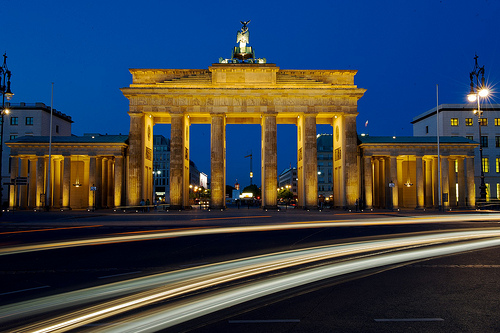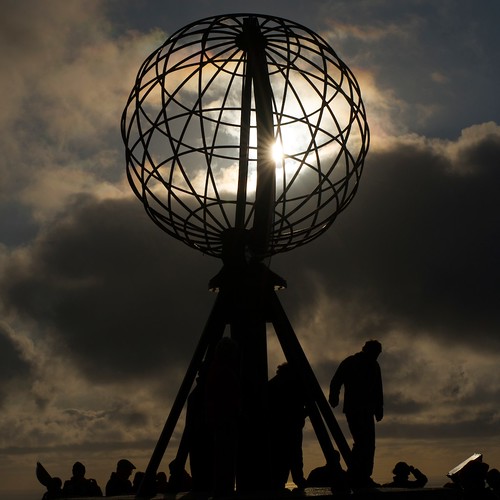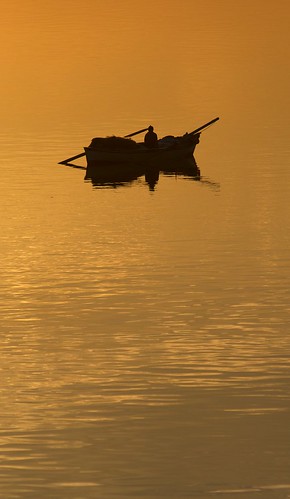Moody photographs, we all love them, but how can we take them ourselves? I guess first we need to know what mood means, it's a pretty abstract concept after all. The dictionary defines it as “Inducing or suggestive of a particular feeling or state of mind” which would suggest that a moody photo is one that creates a feeling in the viewer.
This can be easier said than done. So what do we need to do to add a feeling of mood to our images?
Thinking About Lighting
Well the best place to start is in the camera with the original shot. The most powerful creator of mood we, as photographers have, is light. By using light that is very different from the average, we can create emotion in our images, a sense of place or time. The beginning and end of the day are a great time for this, called the golden hours, the time just before and after sunrise and sunset often provide us with golden, evocative light that can elevate even the most mundane of subjects. The best “golden hour” shots include dramatic skies, where the mixtures of reds and yellows reflecting from the cloud bases can create stunning images. Look to create silhouettes against the sunrise or sunset, you can use this either to block the sun or to balance the shot.
A Golden Hour Silhouette, perfect for setting a mood. Photo by The Odessa Files
Just after the second golden hour comes another wonderful time for creating moody images, the “Blue Hour”. This is when the sun has dipped below the horizon and the reds of the sunset have turned to a pre-night dark blue. This is the time for artificial light shots, buildings, streets, traffic, anything that produces artificial light.
You will need to work fast, the inky blueness of the sky does not last long, and getting the right exposure can be challenging. Even more challenging is getting the right color balance, in this situation, RAW is your friend as it allows you to set the color balance in the post production. Using a long exposure during in the Blue Hour will allow you to get those atmospheric car light trails across your image, adding depth and color.

The Moody Blues. Shooting in the Blue Hour. Photo by The Odessa Files

Car light trails in front of the Brandenburg Gate. Photo by The Odessa Files
Using the Environment as a Mood Modifier
Another great mood enhancer for your photos is stormy weather. This can range from the aftermath of a rainstorm where reflections of the wet surfaces can make for wonderfully evocative shots, to full on storms, with big dark clouds. These conditions are ideal for sweeping landscapes, particularly if glimpses of sunlight emerge from the storm clouds. A useful technique here is to slightly under expose, darkening the cloud and sky and punching the shafts of light out.

Stormy weather and silhouettes, a great combination. Photo by The Odessa Files
One fantastic but difficult to master technique for moody shots is to shoot by moonlight. For this you will need a cloudless night and a full or near full moon and a good steady tripod. Landscapes are the best option for moonlit shots. Look for scenes that do not contain artificial light – even better are scenes that contain water. Focussing will not be easy. It may be worth bracketing your focus points. One essential will be a good steady tripod and perhaps a remote release to reduce shake during the inevitable long exposures. This is another area where shooting RAW is going to be a major advantage, allowing you to further enhance the mood by using color balance in the post production.
Don't Forget Basic Camera Skills
Lastly for today, is depth of field. A shallow depth of field is a great way of adding mood and emotion to your images. By using a shallow focus you can draw your viewers eye to or even away from the subject. A blurred background can be highly suggestive, planting an idea or emotion in a person’s mind, whilst in portraiture, sharply focussed eyes can draw you into the subjects personality.

Using Depth of Field to convey emotion. Photo by The Odessa Files
As we said at the top, mood is a highly subjective and sometimes difficult thing to a achieve. The above are just a few of many ways to create atmosphere and emotion in your images but the simplest rule of thumb is if the scene in front of you stirs your emotions, then there is a good chance you are on your way to a moody photograph.






2 Comments
Awesome post. I knew about the blue hour, but didn’t realise there was a golden hour too.
Thank you for those great tips!